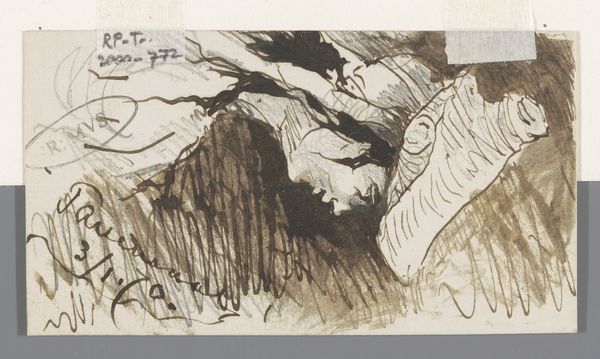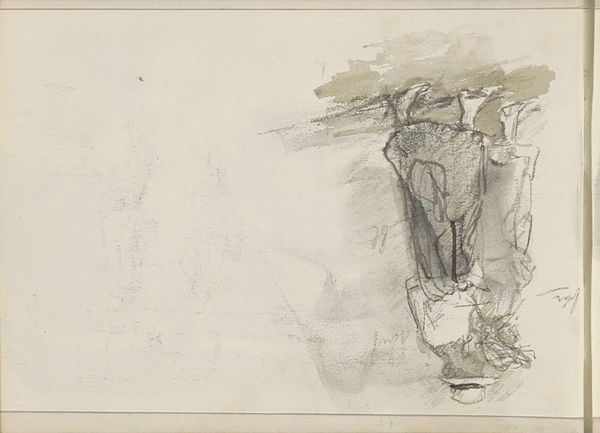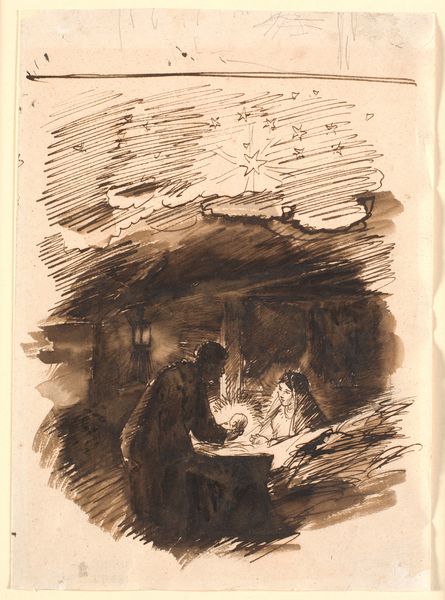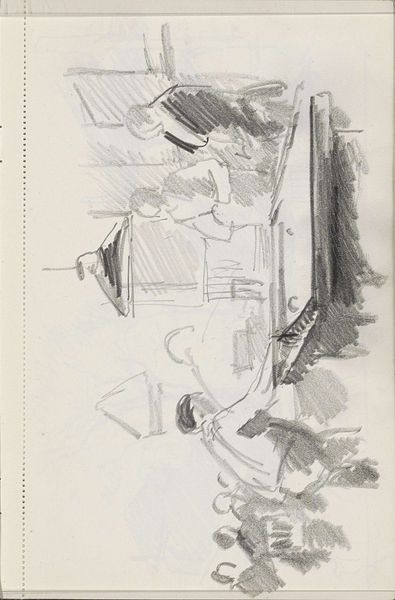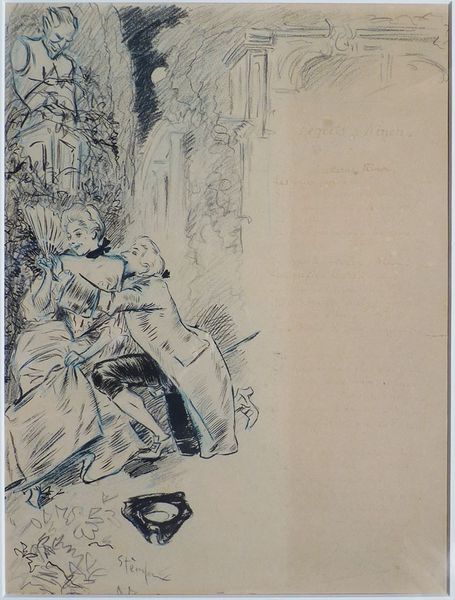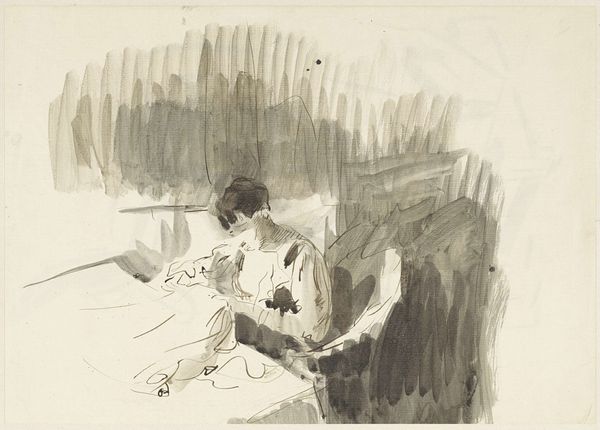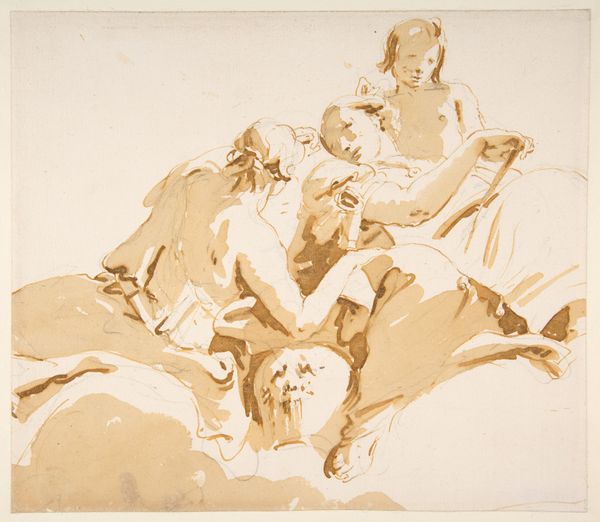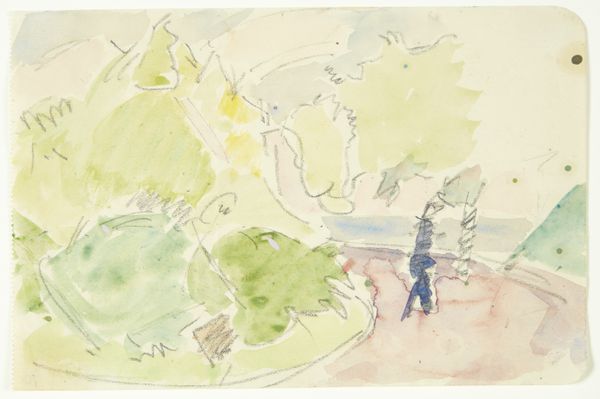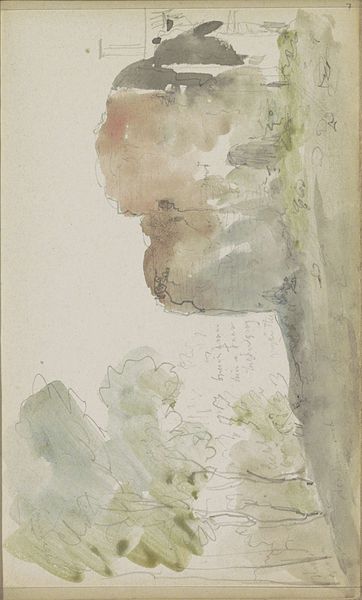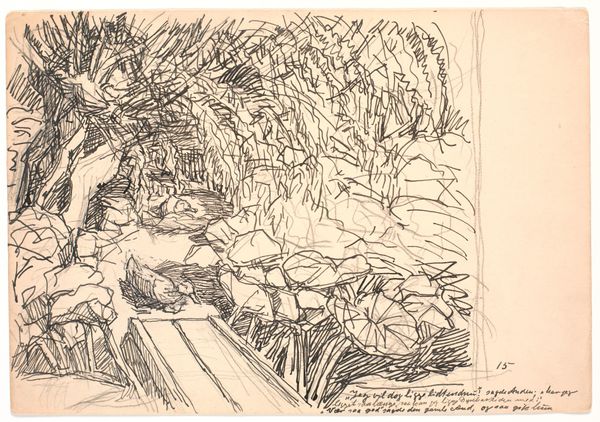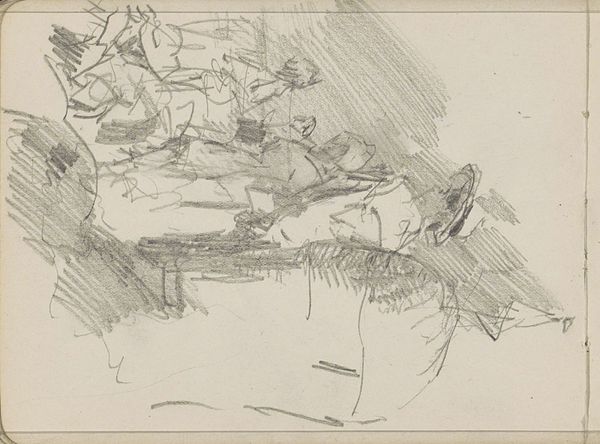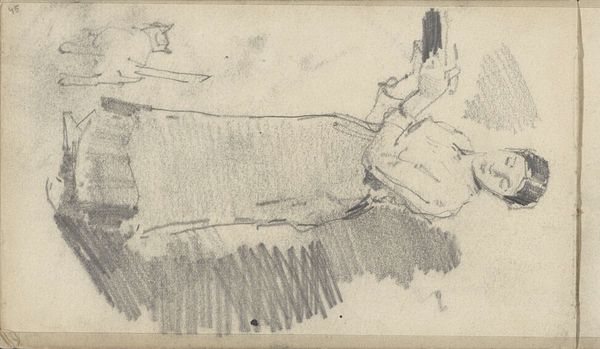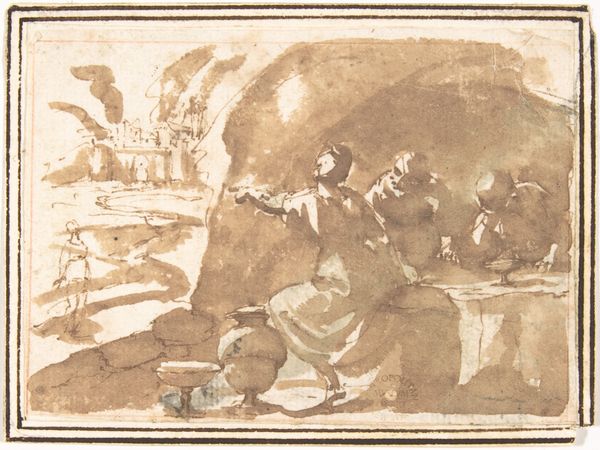
drawing
#
drawing
#
possibly oil pastel
#
handmade artwork painting
#
oil painting
#
fluid art
#
acrylic on canvas
#
underpainting
#
painting painterly
#
watercolour bleed
#
watercolour illustration
#
watercolor
Dimensions: sheet: 11.5 × 17.4 cm (4 1/2 × 6 7/8 in.)
Copyright: National Gallery of Art: CC0 1.0
Curator: I am struck by how peaceful this artwork appears. The artist really captured a wonderful sense of serenity. Editor: Indeed. Let's explore what creates this mood. The work before us is titled "Resting," by John Singer Sargent, believed to have been created sometime between 1880 and 1890. It is likely oil pastel or watercolor on paper. Curator: The subject, reclining by a tree with a book, bathed in dappled sunlight—the symbolic weight of leisure and introspection feels almost palpable. Consider the pose. Is it surrender, contentment, perhaps even escape? It clearly evokes ideas of nature and contemplation, which resonates even today. Editor: The timing of its creation, within the context of the Gilded Age, is critical here. Sargent’s aesthetic decisions about light and composition were not made in a vacuum. This was a time when industrialization and urbanization were transforming societies, prompting retreats to nature as status symbols. Is this perhaps a romanticized counterpoint to those shifts? Curator: Interesting idea. The very act of portraying someone resting amidst nature serves almost as a cultural antidote to that period's relentless ambition and transformation. It offers an oasis of stillness, of interiority, which had been diminished. The choice to feature literature amplifies that. The book represents an intimate space for thought, knowledge, and reverie—values that existed separately from outward achievement. Editor: And beyond that, what is Sargent doing here by placing that specific moment of leisure and reflection within the context of artistic and societal developments? The prevalence of pastoral themes grew during periods of massive upheaval. How could it be possible to use art to either challenge or perpetuate ideas about leisure and class? Curator: Ultimately, “Resting” is less a snapshot of someone at rest, and more an evocative reflection on how society views the notion of 'rest' itself. A reminder of our human need for moments of respite and self-reflection—an invitation, perhaps, to find our own shade and sanctuary, however fleetingly. Editor: This piece has really expanded my ideas regarding the role of the artist to interpret society, not merely as an observer, but to subtly shape the viewers perceptions.
Comments
No comments
Be the first to comment and join the conversation on the ultimate creative platform.
